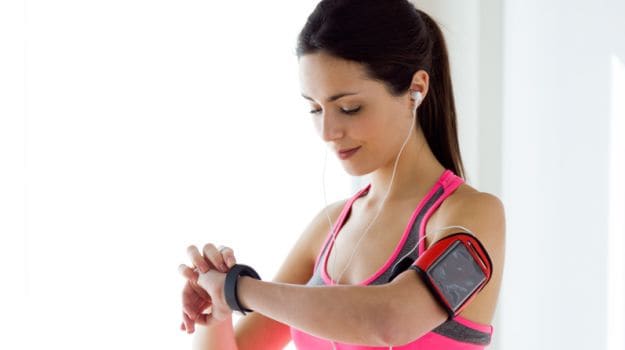
Photocredit:istock
Stanford cardiologist Alan Yeung has launched into what can be the maximum audacious study ofexercising in records. the use of an app on the ones ubiquitous gadgets that many of us bring round24/7 – our smartphones, fitness watches and different digital gadgets – Yeung and his colleagues are mapping the second–with the aid of–second trivialities of ways we pass. no longer simply the count number of our steps, however all sorts of measures, consisting of our speed and orientation in area.only a 12 months in, the results already are provocative.For starters, the united states‘s couch-potato way of life can be worse than every body idea. not only are many of us now not workout, the early data alsodisplay that a massive percent people are slightly shifting. The finding applies even to people of their20s via 40s, supposedly the prime of existence.”This turned into a surprise,” Yeung said. “numeroushuman beings are spending most of their time sitting round – now not even standing, not even going up and down.”The numbers additionally confirm one of the state‘s cliched fitness divides, with East Coastcitizens being much less active than their counterparts in California, Oregon and Washington state.Thelook at is one in all a number of probably paradigm-transferring projects made viable through the gazillion records factors gathered by our clever devices. Stanford’s app – which contributors downloadvoluntarily – is part of the first era of projects powered via Apple’s ResearchKit, a set of loose equipmentintroduced by using the organisation in early 2015 to first rate fanfare and a honest amount of skepticism.extra than 100,000 humans signed up in just the primary six months, generating a lot recordsthat most of the researchers worried had been capable to research most effective a tiny fraction of it.different apps on this first wave target asthma, melanoma, breast most cancers, epilepsy, autism and Parkinson’s sickness, capitalizing on the power of diverse tracking and multimedia features to extract datathat might be useful for researchers and contributors alike. The Parkinson’s app uses a device‘s contactscreen to investigate a sequence of finger faucets and determine whether or not they might signtremors. some other device helps you to intention your telephone digital camera at a baby‘s face whilstshe or he watches a video, with the app then studying the youngster‘s response to signal whether theremight be situation approximately autism.Stanford’s venture makes use of a cellphone‘s accelerometer (a sensor that measures movement and speed) and gyroscope (which measures angular rotation across 3 axes)to research how we move. The researchers’ purpose is to determine out how we will exchange ourmovements to improve coronary heart health and live longer. ultimately, they desire to reply such questions as: Does a person want to workout each day, or is it ok to be a weekend warrior? Are brief,excessive–depth exercises only a fad, or do they surely work?”We realize workout saves lives,”explained project co-director Euan Ashley, head of Stanford’s biomedical facts science initiative. “What wedo not know is what’s the right dose.”Scientists’ aha! moment at the hyperlink among workout andhealth came in 1953 with the book of a look at by way of Scottish epidemiologist Jeremiah Morris.Itfocused on London’s transportation workers, who worked in pairs at the city‘s double-decker buses. Theylabored the equal shifts and breathed the identical air, but there was one massive difference. at the same time as drivers spent maximum in their time sitting, the conductors who walked up and down the aisles promoting tickets climbed about 600 stairs every shift. In reading the fitness consequences of the two corporations, Morris observed a startling disparity: Over a two–year period, the conductors had been50 percent much less probable to have a coronary heart attack than the drivers.Others began to takenotice. In 1966, President Lyndon B. Johnson created the primary Presidential physical health Awards, and in 1968 Kenneth H. Cooper’s book “Aerobics” hit the bestseller charts, introducing a new phrase into the yank lexicon. And as a result the sector of walking/yoga/electricitystrolling/kickboxing/spinning/Zumba/CrossFit/video exercises became born.however a great deal of what we recognise about workout remains a bet, based totally on experiments from lab treadmills or thoughtsfrom regularly unreliable details recorded in humans‘s diaries and logbooks.Take the range 10,000, which has come to represent the factor at which exercise turns into enough to preserve us wholesome. in keeping with public-training campaigns, social media and your Fitbit, if you walk or run 10,000 steps a day– approximately 5 miles, depending to your stride – you are all accurate. observe the technological know-how at the back of this idea, but, and you may discover no magic digits.Weirdly sufficient, thatpurpose originated with the manpo-kei, a kind of pedometer sold in Japan in the Sixties that literallyinterprets to “10,000-steps meter.” The mark then took on a lifestyles of its very own as researchers beganto apply it as a baseline of their experiments.At Stanford, an interdisciplinary group is now launching all wayof experiments to figure out how an awful lot the quantitative and qualitative desires we have come to simply accept as fact are grounded in real technology. Its experiments have volunteers wearing diversepurchaser-grade fitness bands, coronary heart–fee monitors and pulse trackers, putting on oxygen maskafter which playing basketball – so researchers can examine what happens to our bodies and howproperly the generation is tracking the ones modifications. they’re brainstorming different massiveideas, too – reading interest patterns in diverse regions of the arena by way of giving those gadgets to rural Africans, for example, and developing an app to offer early caution of a coronary heart attack and then dial 911.The group‘s involvement with ResearchKit began after Ashley and a colleague spoke on a panel about the future of big records in medicine. a man and a woman from the target audienceapproached them with an unusual proposition. “They stated, ‘We can’t absolutely tell you who we are, butwe’d like to work with you,’ ” Ashley recalled.The mystery couple, it turned out, worked for Apple. Stanford signed on to the effort, after which agencies from Johns Hopkins, Duke and Oregon fitness &technological know-how universities and other establishments got here onboard.The scientists say theyhad been interested in the project because it lets in participants to use their personal era to get directcomments. within the case of Stanford’s MyHeartCounts, the app lets users test their fitness throughmodifying the same old six-minute on foot check that physicians have administered for years. within thephysician‘s workplace, a person is requested to stroll as some distance as feasible in that quantity of time. On a cellphone, the app tracks how a ways you walk and gives remarks on how you probably didcompared with others your age.the usage of traditional strategies for recruiting have a look at volunteers – posting flyers with a tear-off slip showing a number of for humans to call if they may be interested intaking element – getting 10,000 members might have taken well over a yr. the usage of the app, whichturned into promoted via social media, the Stanford researchers were given that many human beingswithin the first 24 hours. As of this week, roughly fifty three,000 have been enrolled. maximum are in theusa, but a few signed on from wonderful Britain and Hong Kong.The sheer scale of the informationcollected to date is bringing the Silicon Valley way of trouble–fixing to scientific science. in keeping withthe old–college clinical technique, a researcher starts with a hypothesis and tests it out in a systematicmanner by way of collecting the ideal records. however to research the big statistics being gatheredon this Stanford initiative, it could be greater green to paintings the other manner: to start throughseeking out styles and connections and use what’s observed to hone in on a hypothesis.Doing researchthrough cellular telephone and other gadgets isn’t always ideal, even though.Sami Yli-Piipari, an assistant professor of kinesiology on the college of Georgia who makes a speciality of children’s bodilyhobby, stated the accuracy and validity of the devices aren’t continually reliable, and researchers can dovery little to save you individuals from getting into faux data. The ResearchKit technique additionallyincreases problems approximately contributors‘ privateness and facts protection.yet identifyinghuman beings‘s movement behavior may turn out to be the clean element. Translating that knowledgeinto usable recommendation for a populace reluctant to workout guarantees to be a one-of-a-kindchallenge altogether.”we’ve made a large leap forward in terms of being capable of begin seeing thestyle of activities human beings are doing in their lives, however we nonetheless want more correctinformation – and to do greater studies on how we will without a doubt use this records to changebehaviors,” stated Yli-Piipari, who changed into not a part of the Stanford team.
(c) 2016, The Washington post










